Nanhai No.1 Shipwreck Site: A Must-Visit for History Buffs and Divers
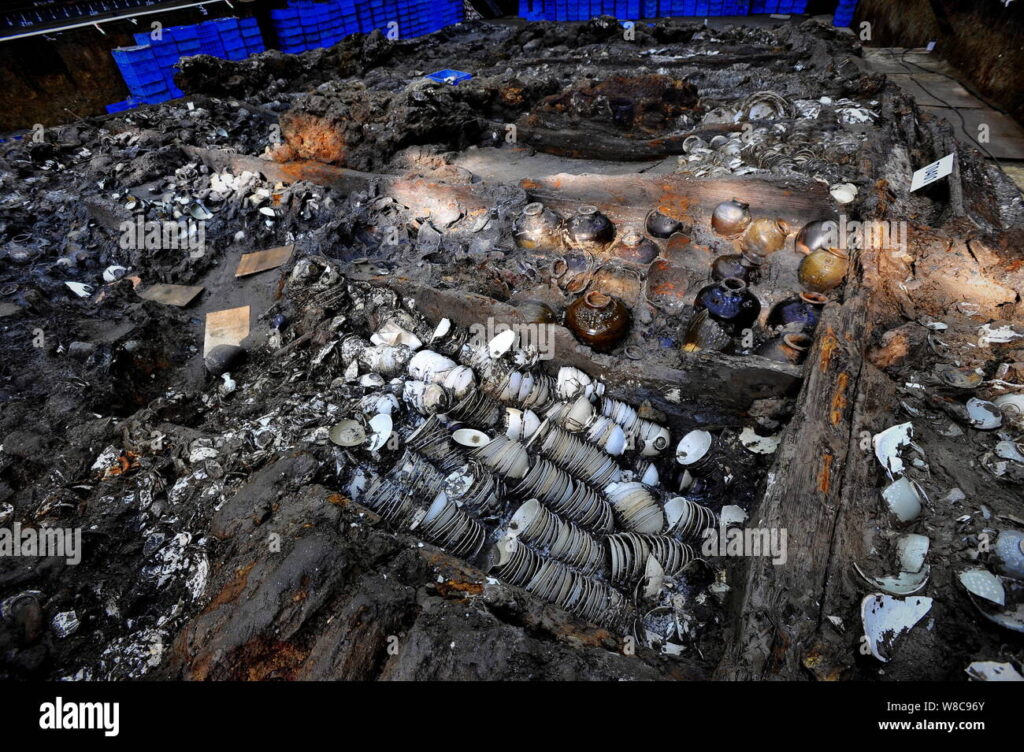
An Essential Guide to Visiting Nanhai No.1 Shipwreck Site
Nestled beneath the shimmering waters of the South China Sea lies a treasure trove of history: the Nanhai No. 1 shipwreck. This remarkable 13th-century merchant vessel, discovered in 1987 by an intrepid joint Sino-British expedition, is not just a relic of maritime trade; it is a window into a bygone era where the seas were bustling with commerce and cultural exchange. As visitors step into the Guangdong Maritime Silk Road Museum, they are greeted by the stunning Crystal Palace—the glass structure that houses the ship in a carefully controlled aquarium environment, preserving its delicate artifacts for generations to come.
The story of Nanhai No. 1 is one of perseverance and innovation. After two decades of meticulous excavation and conservation efforts, this ancient marvel has become a centerpiece of underwater archaeology, showcasing the artistry of ancient Chinese craftsmanship through its vast cargo of porcelain, gold, and copper artifacts. As you walk through the museum, you’ll have the unique opportunity to witness archaeologists at work, uncovering secrets from the wreckage in real time, all while standing beneath a simulated starry sky reminiscent of the ship’s original voyage.
Visiting the Nanhai No. 1 shipwreck site is more than just a trip to a museum; it’s an immersive journey into the heart of maritime history, a celebration of human ingenuity, and a chance to connect with the stories of those who sailed the seas long before us. Whether you’re a history enthusiast, an archaeology buff, or simply seeking a unique experience, this extraordinary site promises to leave you inspired and in awe. Join us as we explore the essential details for making the most of your visit to this captivating underwater wonder.
In This Guide
- An Essential Guide to Visiting Nanhai No.1 Shipwreck Site
- The Rich History and Legends of Nanhai No.1 Shipwreck Site
- Main Highlights: What You Absolutely Can’t Miss
- Planning Your Visit: A Practical Guide
- Tickets: Prices, Booking, and Tips
- How to Get There: A Complete Transportation Guide
- Local Cuisine and Accommodation Nearby
- Frequently Asked Questions
- Final Thoughts on Your Trip
The Rich History and Legends of Nanhai No.1 Shipwreck Site
Nestled off the coast of Guangdong, the Nanhai No. 1 shipwreck site is not just an archaeological treasure; it is a portal to an era of maritime exploration and trade that flourished centuries ago. Discovered in 1987 by a Sino-British team, this ancient merchant ship, believed to have sunk in the 13th century, has captivated historians and archaeologists alike with its rich cargo and storied past.
The ship’s name, Nanhai No. 1, derives from the South China Sea, where it was found, with “No. 1” indicating it was the first of its kind to be excavated in this manner. The discovery was serendipitous; the team was originally searching for a Dutch East India Company vessel but instead unearthed a significant piece of Chinese heritage, lying 23 meters beneath the waves. The ship is a Fuchuan—a type of vessel built in Fujian province, renowned for its watertight-bulkhead technology, which was inscribed on UNESCO’s List of Intangible Cultural Heritage in Need of Urgent Safeguarding in 2010.
Nanhai No. 1’s journey was tragically short-lived, likely due to overloading or a storm that claimed it soon after setting sail. It was designed to carry nearly 200 tons but was believed to be transporting an astonishing 100,000 sets of antiques, including 13,000 pieces of exquisite porcelain and vast quantities of gold, silver, and copper artifacts. The cargo reflects the vibrant trade networks that connected China to distant lands, showcasing the global nature of commerce during the Southern Song dynasty.
The ship’s excavation has been a monumental endeavor in itself, taking two decades to lift the structure from the seabed successfully. On December 21, 2007, after extensive planning and funding of approximately $20 million, Nanhai No. 1 was brought to the surface using a specially designed caisson. This innovative technique not only marked a milestone in underwater archaeology but also ensured the ship remained remarkably well-preserved, allowing for a detailed study of its contents and construction.
The ongoing excavation, which began in 2013, has revealed a wealth of artifacts that shed light on life aboard the ship, including personal possessions such as gold necklaces and lacquerware, hinting at interactions with foreign traders. Archaeologists have unearthed evidence of the ship’s intended destinations, with Chinese ceramics discovered as far afield as India and the Middle East, underscoring the complexity of maritime trade routes that existed over 800 years ago.
Today, Nanhai No. 1 resides in the Guangdong Maritime Silk Road Museum, housed within the Crystal Palace—an architectural marvel designed specifically to replicate the ship’s original underwater environment. Visitors can watch archaeologists at work, providing a unique glimpse into the meticulous process of excavation and conservation. As the museum continues to attract tourists, it has also become a catalyst for local economic growth, transforming Hailing Island into one of China’s top tourist destinations.
The story of Nanhai No. 1 is still being written. As archaeologists strive to complete the excavation and conservation of this ancient vessel, it stands as a testament to the enduring legacy of China’s maritime history and its pivotal role in global trade. Through its artifacts and the legends they carry, Nanhai No. 1 not only preserves the past but also inspires future generations to delve into the rich tapestry of human exploration and connection across the seas.
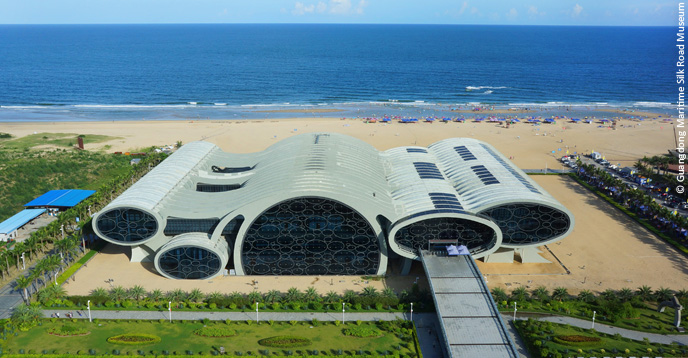
Nanhai No.1 Shipwreck Site.
Main Highlights: What You Absolutely Can’t Miss
The Nanhai No.1 Shipwreck Site, located within the stunning Guangdong Maritime Silk Road Museum on Hailing Island, offers an extraordinary glimpse into maritime history and archaeology. As you explore this remarkable site, here are the main highlights that you absolutely cannot miss:
1. The Crystal Palace
Step inside the museum’s iconic Crystal Palace, a stunning glass structure that beautifully frames the Nanhai No.1 shipwreck. This unique environment allows visitors to appreciate the ship’s grandeur while witnessing ongoing archaeological work. The design is not just aesthetic; it also replicates the underwater conditions necessary to preserve the ship’s integrity.
2. The Nanhai No.1 Shipwreck
Marvel at the Nanhai No.1, one of the oldest and largest sunken vessels ever discovered in China. This 13th-century merchant ship offers a rare window into the maritime trade routes of ancient China. Its impressive size, measuring approximately 35.7 by 14.4 meters, stands as a testament to the advanced shipbuilding techniques of the Southern Song dynasty.
3. Ongoing Archaeological Excavation
One of the most captivating aspects of your visit will be the opportunity to observe archaeologists at work. The excavation of Nanhai No.1 is an ongoing process, allowing visitors to witness firsthand the meticulous care taken in uncovering the ship’s artifacts. This live excavation experience is unique to the museum and provides insight into the complexities of underwater archaeology.
4. Rich Cargo Discoveries
The artifacts discovered within the ship’s hold are nothing short of astonishing. Among the treasures are 13,000 pieces of exquisite porcelain, gold and silver jewelry, and a wealth of coins—over 17,000 copper coins alone! Each item tells a story, revealing the trade goods of the time and hinting at the diverse cultures that interacted through maritime trade.
5. Educational Exhibits and Displays
Explore interactive exhibits that delve deeper into the life aboard the Nanhai No.1. Learn about the ship’s design, construction methods, and the cargo it carried. The museum houses detailed displays that illustrate the trade routes of ancient China, shedding light on the ship’s likely destinations, which included regions as far-flung as India and the Middle East.
6. Simulated Night Sky Experience
Ascend to the upper level of the Crystal Palace for a mesmerizing experience under a simulated star-studded sky. This immersive environment recreates the feeling of being aboard the ship at night, providing a unique perspective on the life of ancient mariners navigating the vast oceans.
7. The Future of Nanhai No.1
Stay informed about the ongoing conservation efforts that will ensure the preservation of this historical wreck for generations to come. With plans for exhibitions both in China and abroad, the story of Nanhai No.1 continues to evolve, making your visit part of a larger narrative about maritime heritage and archaeology.
8. Cultural Impact and Community Benefits
Appreciate how the museum has transformed Hailing Island into one of China’s top tourist destinations. The local community has thrived due to the influx of visitors, illustrating the positive impact of cultural heritage on economic development.
A visit to the Nanhai No.1 Shipwreck Site is not just a journey through history; it’s an invitation to engage with the stories, cultures, and innovations of ancient maritime trade. Don’t miss this rare opportunity to explore one of the world’s most significant underwater archaeological sites!
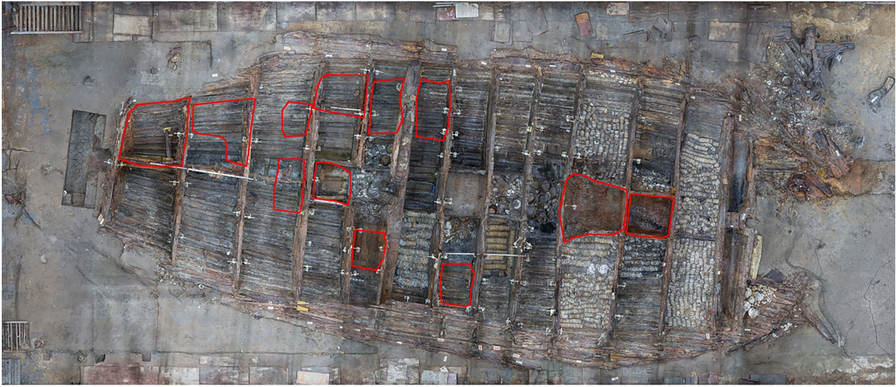
Nanhai No.1 Shipwreck Site.
Planning Your Visit: A Practical Guide
When planning your visit to the Nanhai No.1 Shipwreck Site, you’re in for a unique experience that blends history, archaeology, and maritime culture. Nestled in the Guangdong Maritime Silk Road Museum, this site is unlike any other, offering an immersive glimpse into 13th-century maritime trade. Here’s everything you need to know to make the most of your visit.
Getting There
Location:
The Nanhai No.1 is situated in the Guangdong Maritime Silk Road Museum on Hailing Island, near Yangjiang city in Guangdong Province. The museum is the only one in Asia designed specifically to house a shipwreck of this magnitude.
Transportation:
– By Air: The nearest major airport is in Guangzhou, which is approximately 200 kilometers away. From Guangzhou, you can take a train or a bus to Yangjiang.
– By Train: High-speed trains connect Guangzhou and Yangjiang, making it a convenient option. From Yangjiang, local taxis or buses can take you to Hailing Island.
– By Car: If you prefer driving, Hailing Island is accessible via the coastal highways. Parking is available at the museum.
Museum Hours and Admission
- Opening Hours: The museum is typically open from 9:00 AM to 5:00 PM daily, but it’s advisable to check their official website for any seasonal changes or public holidays.
- Admission Fee: Entrance fees may vary, with discounts available for students and seniors. Reservations in advance are recommended, especially during peak tourism seasons.
What to Expect
Upon entering the museum, you’ll be greeted by the impressive Crystal Palace, a uniquely designed glass structure housing the Nanhai No.1 shipwreck. The ship is displayed in a large aquarium that mimics the original underwater environment, allowing you to witness the ongoing excavation and conservation efforts firsthand.
Highlights of Your Visit
- Live Excavations: One of the most remarkable aspects of your visit is the opportunity to see archaeologists at work. This is a rare chance to observe the delicate process of underwater archaeology and learn about the artifacts being uncovered.
- Interactive Exhibits: The museum features several interactive displays that provide context about the ship’s history, its cargo, and the maritime trade routes of the time.
- Educational Programs: Check for guided tours or educational workshops that may be available on the day of your visit. These programs often delve deeper into the archaeological significance of the site.
Dining and Amenities
While visiting the museum, you’ll find facilities such as restrooms and a small café offering local snacks and beverages. However, for a more substantial meal, consider venturing into Yangjiang, where you can explore local restaurants serving delicious Guangdong cuisine. Be sure to try the seafood, a highlight of the region!
Nearby Attractions
After your visit to the Nanhai No.1, take the time to explore Hailing Island and its surroundings:
- Local Beaches: Enjoy some relaxation at the nearby beaches, known for their clear waters and scenic views.
- Yangjiang City: Discover the vibrant city of Yangjiang, where you can find local markets, cultural sites, and parks.
- Fujian Shipbuilding Museum: If you’re interested in maritime history, this museum provides additional insights into ancient shipbuilding techniques.
Tips for Your Visit
- Wear Comfortable Shoes: The museum is quite expansive, and you’ll want to be comfortable as you explore.
- Photography: Be mindful of museum rules regarding photography. While many areas may allow it, some sections may be restricted to protect artifacts.
- Plan for Weather: Hailing Island enjoys a subtropical climate. Check the weather forecast before your visit and dress accordingly.
Conclusion
Visiting the Nanhai No.1 Shipwreck Site is more than just a trip to a museum; it’s an adventure into the depths of history and maritime culture. Whether you’re an archaeology enthusiast or simply curious about ancient trade practices, this destination promises to leave you enriched and inspired. Prepare for a captivating journey and enjoy your exploration of this underwater treasure!
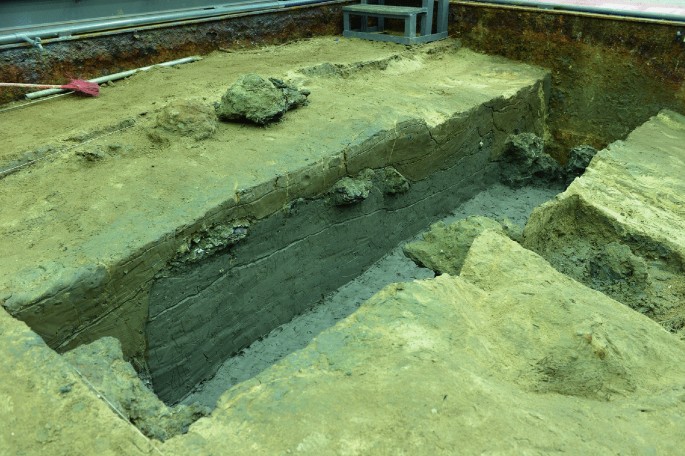
Nanhai No.1 Shipwreck Site.
Tickets: Prices, Booking, and Tips
Visiting the Nanhai No.1 Shipwreck Site is an enriching experience that blends history with cutting-edge archaeology. To ensure a seamless visit, here’s what you need to know about ticket prices, booking options, and helpful tips for your journey.
Ticket Prices
Admission to the Guangdong Maritime Silk Road Museum, where the Nanhai No.1 shipwreck is housed, is quite reasonable, designed to encourage both local and international visitors. As of the latest update, the ticket prices are:
- Adults: Approximately ¥60 (about $9 USD)
- Students (with valid ID): Approximately ¥30 (about $4.50 USD)
- Children under 12: Free entry
Booking Information
Tickets can be purchased directly at the museum entrance, but for a more convenient experience, it’s advisable to book in advance, especially during peak tourist seasons. Here are a few options for securing your tickets:
- Official Website: Visit the Guangdong Maritime Silk Road Museum’s official website to book tickets online. This option often allows you to skip long lines upon arrival.
- Travel Agencies: Many local travel agencies offer packages that include museum tickets along with guided tours of the site.
- Mobile Apps: Popular travel apps in China, such as Trip.com or Klook, allow you to purchase tickets with ease and sometimes include discounts.
Tips for Your Visit
-
Timing Your Visit: The museum is open from 9:00 AM to 5:00 PM, but try to arrive early to avoid crowds. Visiting on weekdays can also provide a more intimate experience as you explore the exhibits.
-
Guided Tours: Consider joining a guided tour to gain deeper insights into the archaeological significance of the Nanhai No.1 shipwreck and its artifacts. Many tours are available in multiple languages.
-
Photography: While photography is allowed in most areas, be sure to check for specific restrictions in sensitive areas to preserve the artifacts and the environment.
-
Facilities: The museum provides essential facilities such as restrooms and a café for refreshments. Take a break and enjoy local snacks while immersing yourself in the maritime history of the region.
-
Local Attractions: After your visit, take the opportunity to explore Hailing Island. It is filled with natural beauty and offers various seaside activities.
Visiting the Nanhai No.1 Shipwreck Site is not just an educational experience; it’s a chance to witness the fascinating intersection of history and archaeology. With a bit of planning, your trip to this remarkable site will be memorable and informative.
How to Get There: A Complete Transportation Guide
To reach the remarkable Nanhai No.1 Shipwreck Site, located within the Guangdong Maritime Silk Road Museum on Hailing Island, you have several transportation options to consider. Here’s a complete guide to help you navigate your journey to this important archaeological site.
Getting to Hailing Island
By Air
The nearest major airport is Yangjiang Nanyi Airport (YNG). From various international and domestic locations, you can book a flight into this airport. Once you land, you can proceed to Hailing Island by taxi or ride-sharing service.
By Train
If you prefer traveling by train, the Yangjiang Railway Station is your best bet. It offers connections from major cities like Guangzhou and Shenzhen. Once you arrive at Yangjiang Railway Station, you can take a taxi or local bus to reach Hailing Island.
By Bus
Long-distance buses provide another convenient option. From cities like Guangzhou, Shenzhen, or Zhuhai, you can board a bus headed for Yangjiang. Once in Yangjiang, transfer to a local bus or taxi to get to Hailing Island.
Local Transportation on Hailing Island
Upon arriving on Hailing Island, the most straightforward way to get to the Guangdong Maritime Silk Road Museum is by taxi. Taxis are readily available and can transport you directly to the museum.
For those who prefer public transportation, local buses may also operate routes to the museum, but schedules and frequency can vary. It is advisable to confirm the latest information with local sources or your accommodation.
Walking and Exploring
The museum is located in a scenic area, and if you’re feeling adventurous, walking is an option once you reach the island. The surroundings are picturesque, providing a pleasant experience as you make your way to the museum.
Additional Tips
- Timing Your Visit: The museum, which houses the Nanhai No.1 shipwreck, is a popular destination, so consider visiting during weekdays or early in the morning to avoid crowds.
- Language: While some signage may be in English, learning a few basic Chinese phrases can enhance your experience, especially in local transport settings.
- Local Accommodations: If you plan to stay overnight, consider booking accommodations in Yangjiang and then making a day trip to Hailing Island to fully explore the museum and its surroundings.
With this guide in hand, you’re well on your way to exploring the historical depths of the Nanhai No.1 Shipwreck Site. Enjoy your journey into the rich maritime heritage of China!
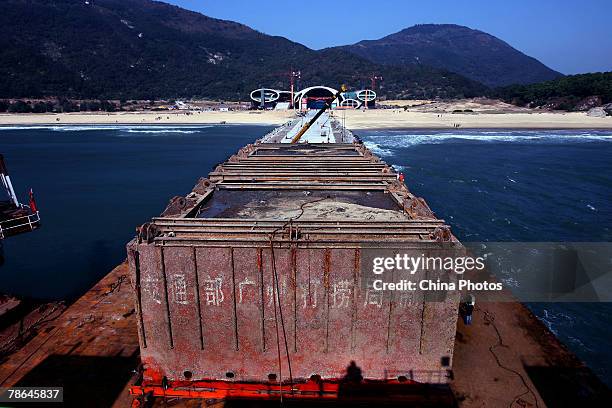
Nanhai No.1 Shipwreck Site.
Local Cuisine and Accommodation Nearby
Exploring the Nanhai No.1 Shipwreck Site is not just a dive into maritime archaeology; it’s also an opportunity to indulge in the rich local cuisine and enjoy a comfortable stay nearby. Here’s a guide to savoring the flavors and finding cozy accommodations in the vicinity of this remarkable cultural treasure.
Culinary Delights
1. Seafood Specialties at Hailing Seafood Restaurant
Located just a stone’s throw from the Guangdong Maritime Silk Road Museum, Hailing Seafood Restaurant is renowned for its fresh seafood dishes. Here, you can savor local specialties like steamed grouper, spicy crab, and sea cucumber. The restaurant prides itself on using ingredients sourced from the nearby South China Sea, ensuring a delightful culinary experience that reflects the region’s maritime heritage.
2. Traditional Cantonese Cuisine at The Pearl House
For a taste of classic Cantonese dishes, The Pearl House offers a charming dining atmosphere and a diverse menu. Don’t miss their dim sum, featuring a variety of dumplings and buns, or the roast duck, a local favorite. Pair your meal with a cup of fragrant jasmine tea for an authentic experience.
3. Street Food Stalls
For those looking for a more casual dining experience, the streets around the museum come alive with food stalls selling local snacks. Try the fried rice rolls and pork buns, or indulge in douhua (soft tofu pudding) for dessert. The vibrant street food scene is perfect for adventurous eaters keen to sample the flavors of Hailing Island.
Comfortable Stays
1. Hailing Island Resort
Just a short distance from the museum, Hailing Island Resort offers a blend of luxury and comfort. With spacious rooms overlooking the sea, the resort provides an idyllic setting for relaxation. Guests can enjoy amenities like a swimming pool, spa services, and on-site dining options featuring local and international cuisine.
2. Yangjiang Xinyuan Hotel
For budget-conscious travelers, Yangjiang Xinyuan Hotel offers comfortable rooms at an affordable price. Located within easy reach of the Nanhai No.1 Shipwreck Site, this hotel provides a cozy base for exploring the area. The staff is friendly and can assist you with recommendations for local dining spots.
3. Boutique Guesthouses
For a more intimate experience, consider staying at one of the boutique guesthouses in Hailing. Many of these charming accommodations are run by local families and offer a warm atmosphere, personalized service, and home-cooked meals. This option not only supports the local community but also allows you to immerse yourself in the culture.
Final Thoughts
Visiting the Nanhai No.1 Shipwreck Site is an unforgettable journey into history, and enjoying the local cuisine and comfortable accommodations will enhance your experience. Whether you prefer seafood feasts, traditional Cantonese fare, or street food adventure, Hailing Island has something to satisfy every palate. So, pack your bags and get ready to indulge in a culinary journey that complements your exploration of this extraordinary archaeological site.

Nanhai No.1 Shipwreck Site.
Frequently Asked Questions
-
Where is the Nanhai No.1 Shipwreck Site located?
The Nanhai No.1 Shipwreck Site is housed within the Guangdong Maritime Silk Road Museum, situated on Hailing Island, near Yangjiang City in Guangdong Province, China. This unique museum features a stunning glass structure known as the Crystal Palace, which contains the shipwreck. -
What can I expect to see at the museum?
Visitors can explore the Nanhai No.1 shipwreck, which is displayed in a specially designed aquarium that mimics the original underwater environment. You can observe ongoing archaeological excavations and view artifacts recovered from the ship, such as exquisite porcelain, gold, and silver items. -
How do I get to the Guangdong Maritime Silk Road Museum?
The museum is accessible by public transport or private car from Yangjiang City. There are also local taxis and ride-sharing services available. If you’re traveling from major cities in Guangdong, consider taking a train or bus to Yangjiang and then proceeding to Hailing Island. -
What is the best time to visit the Nanhai No.1 site?
The museum is open year-round, but visiting in spring or autumn may provide the best weather conditions. Avoid the peak summer months when temperatures can soar, making outdoor activities less enjoyable. -
Are there guided tours available?
Yes, the museum offers guided tours in multiple languages, including English. These tours provide in-depth insights into the archaeological significance of the Nanhai No.1 shipwreck and the ongoing research efforts. It’s advisable to check the museum’s website or contact them in advance for tour availability. -
Is there an entrance fee for the museum?
Yes, there is an entrance fee to visit the Guangdong Maritime Silk Road Museum. Prices may vary depending on age, student status, and special exhibitions. Be sure to check the museum’s official website for the latest pricing information and any potential discounts. -
Can I take photos inside the museum?
Photography policies can vary, so it’s best to check with museum staff upon arrival. Generally, non-flash photography is permitted in most areas, but certain sections, especially those involving ongoing archaeological work, may have restrictions. -
Are there facilities for dining and shopping at the museum?
The Guangdong Maritime Silk Road Museum features a café and a gift shop. The café offers local snacks and beverages, while the gift shop sells souvenirs, replica artifacts, and books about maritime archaeology. Enjoy a meal or a snack while taking in the beautiful views of the surrounding area!
Final Thoughts on Your Trip
As you reflect on your visit to the Nanhai No.1 Shipwreck Site, you are not merely standing before a relic of the past; you are connecting with a vibrant tapestry of history that spans centuries. This remarkable site, housed within the stunning Guangdong Maritime Silk Road Museum, offers a rare glimpse into the lives of ancient mariners, their goods, and the intricate networks of trade that once flourished across the South China Sea.
The ongoing excavation and preservation efforts at Nanhai No.1 serve as a testament to human curiosity and resilience. Watching archaeologists meticulously uncover artifacts that tell stories of distant lands and cultures adds a layer of excitement to your experience. Each piece recovered helps to illuminate the rich maritime heritage that shaped not only China but also the broader world.
As you leave this captivating site, consider the significance of what you’ve encountered: a ship that once sailed towards unknown horizons, laden with cargo from different cultures, now preserved in a glass palace for generations to learn from. Allow the echoes of the past to inspire your own journeys, reminding you that every destination holds its own stories waiting to be discovered. Whether you’re an adventurer, a history enthusiast, or simply a curious traveler, the Nanhai No.1 Shipwreck Site invites you to continue exploring the depths of our shared human story. Safe travels on your next adventure!